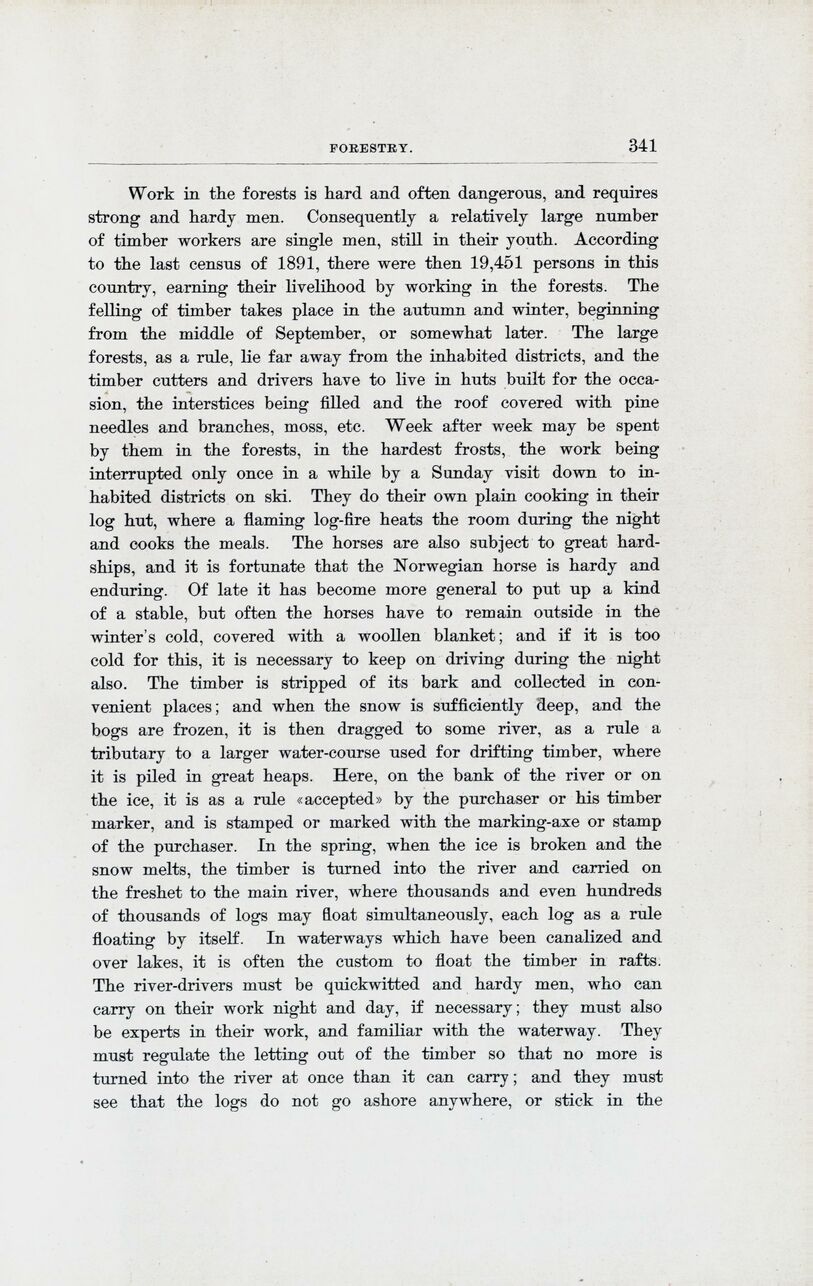
Full resolution (JPEG) - On this page / på denna sida - Forestry, by K. A. Fauchald

<< prev. page << föreg. sida << >> nästa sida >> next page >>
Below is the raw OCR text
from the above scanned image.
Do you see an error? Proofread the page now!
Här nedan syns maskintolkade texten från faksimilbilden ovan.
Ser du något fel? Korrekturläs sidan nu!
This page has been proofread at least once.
(diff)
(history)
Denna sida har korrekturlästs minst en gång.
(skillnad)
(historik)
Work in the forests is hard and often dangerous, and requires
strong and hardy men. Consequently a relatively large number
of timber workers are single men, still in their youth. According
to the last census of 1891, there were then 19,451 persons in this
country, earning their livelihood by working in the forests. The
felling of timber takes place in the autumn and winter, beginning
from the middle of September, or somewhat later. The large
forests, as a rule, lie far away from the inhabited districts, and the
timber cutters and drivers have to live in huts built for the
occasion, the interstices being filled and the roof covered with pine
needles and branches, moss, etc. Week after week may be spent
by them in the forests, in the hardest frosts, the work being
interrupted only once in a while by a Sunday visit down to
inhabited districts on ski. They do their own plain cooking in their
log hut, where a flaming log-fire heats the room during the night
and cooks the meals. The horses are also subject to great
hardships, and it is fortunate that the Norwegian horse is hardy and
enduring. Of late it has become more general to put up a kind
of a stable, but often the horses have to remain outside in the
winter’s cold, covered with a woollen blanket; and if it is too
cold for this, it is necessary to keep on driving during the night
also. The timber is stripped of its bark and collected in
convenient places; and when the snow is sufficiently deep, and the
bogs are frozen, it is then dragged to some river, as a rule a
tributary to a larger water-course used for drifting timber, where
it is piled in great heaps. Here, on the bank of the river or on
the ice, it is as a rule «accepted» by the purchaser or his timber
marker, and is stamped or marked with the marking-axe or stamp
of the purchaser. In the spring, when the ice is broken and the
snow melts, the timber is turned into the river and carried on
the freshet to the main river, where thousands and even hundreds
of thousands of logs may float simultaneously, each log as a rule
floating by itself. In waterways which have been canalized and
over lakes, it is often the custom to float the timber in rafts.
The river-drivers must be quickwitted and hardy men, who can
carry on their work night and day, if necessary; they must also
be experts in their work, and familiar with the waterway. They
must regulate the letting out of the timber so that no more is
turned into the river at once than it can carry; and they must
see that the logs do not go ashore anywhere, or stick in the
<< prev. page << föreg. sida << >> nästa sida >> next page >>